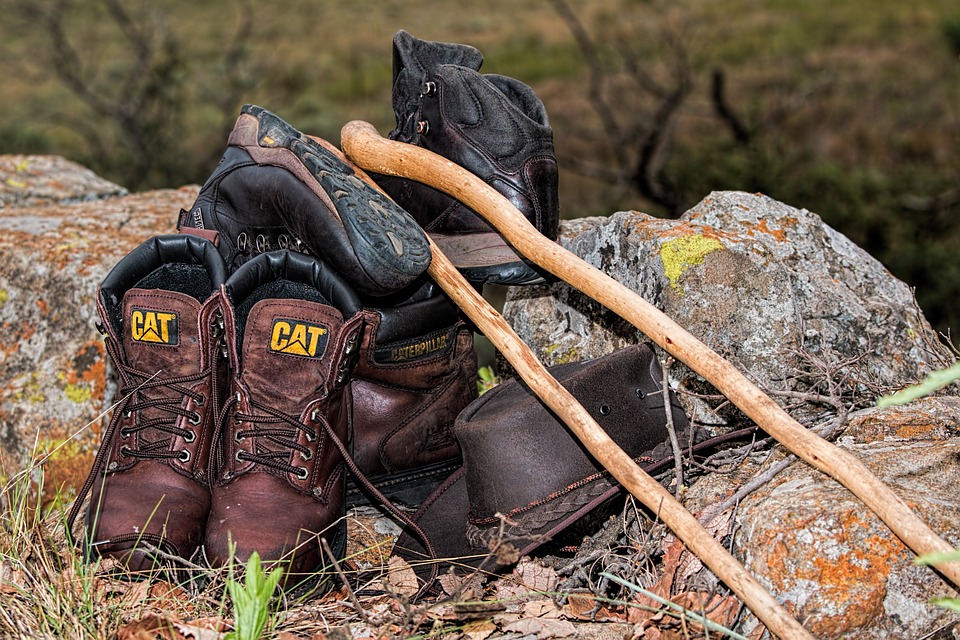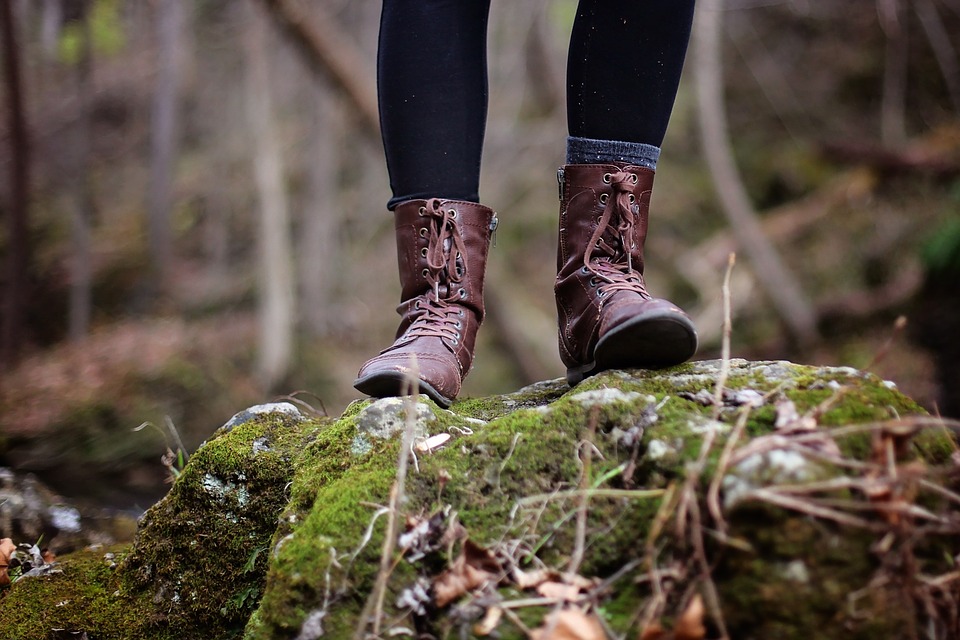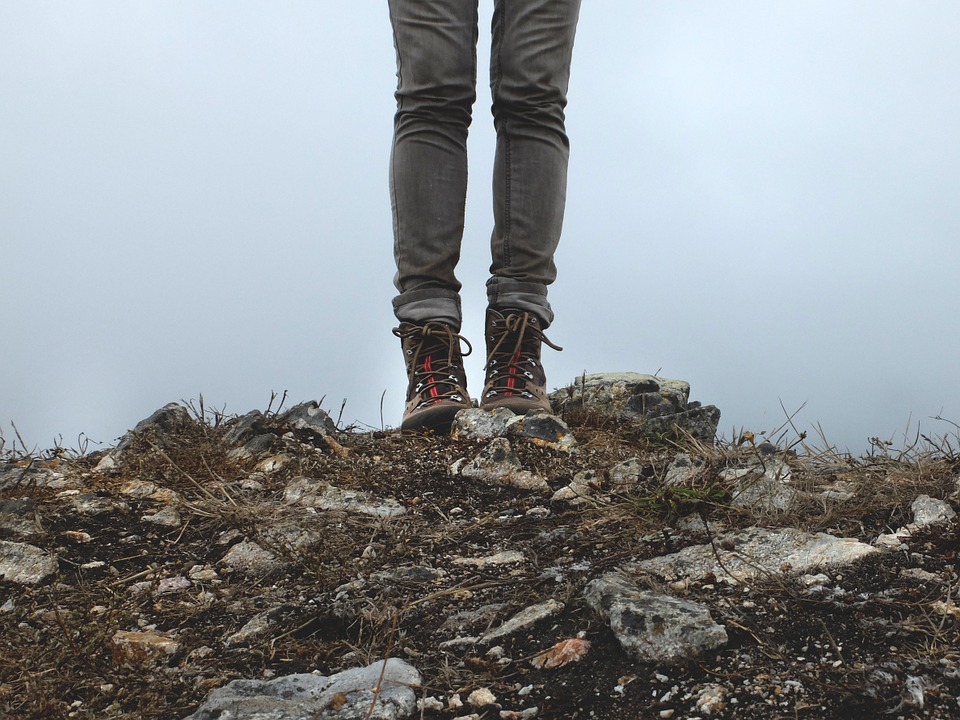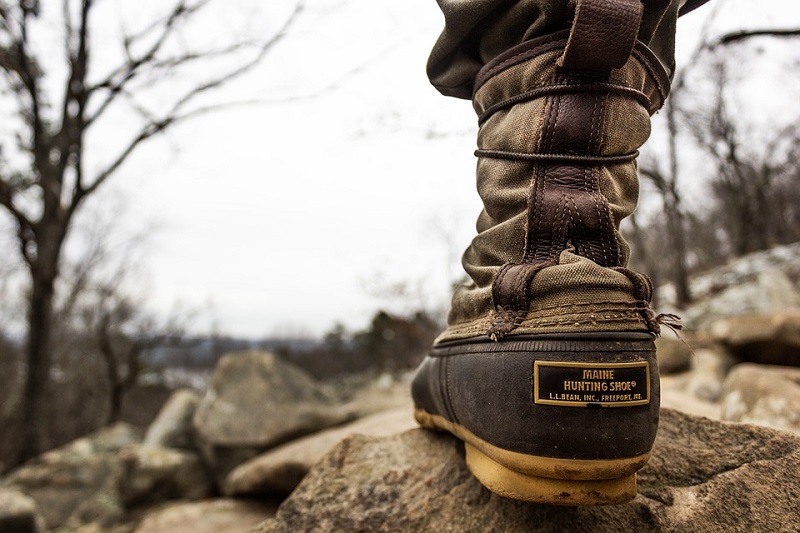The hiking boots can create or destroy your day on the way. When hiking boots fit accurately, you can move for miles and yet feel great at the end of the day. When they do not match well and create foot pain, it can make for a very unsatisfactory experience. If you are questioning “how should hiking boots fit?” or you have plantar fasciitis and are seeming for the most suitable hiking footwear, you are in the right place we at BestDamascusKnife are giving you guidance on how should hiking boots fit.
Basics Of Hiking Soles

Basics Of Hiking Soles
- There are many kinds of hiking boots available – easy hiking shoes, backpacking boots, and mountaineering boots. To get the most suitable hiking boots for you, make assured you meet your hiking goals with your footwear.
- The most excellent hiking boots will implement your feet well, keeping your foot securely without binding or hot places.
- Your hiking boots should give the appropriate level of arch care for your feet, particularly if you have plantar fasciitis. If the arch support in your hiking boots is not enough, join arch support supplements for hiking boots.
- Other factors to examine when you are viewing for the most suitable hiking boots hold the flex of the boots, breathability, outsole tread, and weight.
What You Necessitate To Know
KINDS OF HIKING BOOTS
Picking the most suitable hiking boots can be as daunting as hiking the Appalachian Trail blindfolded. There are three foremost kinds of hiking footwear—all created for varying levels of enthusiasm. Meeting your hiking purposes with your footwear will enhance your pleasure and your mileage on the trail.
- Light Hiking Shoes – A low-cut design with a soft mid-sole. Most suitable for day hiking, tracks running, and ultra-lightweight backpacking tours.
- Backpacking Boots – The high-cut boots for extra ankle comfort. These boots will have more difficult mid-soles to shield the bottoms of your feet from rugged areas. It is created for hikers taking heavier weights over more extended distances.
- Mountaineering Boots – These are heavier and added durable than standard hiking boots. Sometimes leather and sometimes plastic with a detachable internal boot. It is built for alpine climbing, glacier crossings, and high elevation. Most maximum mountaineering boots have thick soles and are intended for use with crampons (spikes for walking/climbing on ice).
While those mountaineering boots seem super strong and enduring, wearing them on a small day hike will slow you down and feel clunky. And, on the other end of the spectrum, climbing snow-covered peaks in light hikers can be dangerous.
What To View For In The Hiking Boots
When you are choosing new footwear for hiking, you are seemingly questioning “should hiking boots be snug?” or “how tight should hiking boots be?” Taking the right fit is everything, therefore make assured you take your time and comprehend these tips.
Guide: How Should Hiking Boots Fit?

Guide How Should Hiking Boots Fit
Fit is the most crucial perspective. When your foot is securely inside the shoe, place your weight on the head of the foot. You should be ready to fit your index finger comfortably within your heel and the back of the shoe.
Smaller than this and your toes will get injured on descents. Width-wise, the shoe should hold snug but not fixed at the fullest part of your forefoot (the ball). There should be no pinching at the heel and nothing should seem awkward on your ankle bones.
Follow this advice to get the most suitable hiking boot fit:
- Fit is everything – A great-fitting boot with some characteristics will forever be more useful than a poor-fitting boot with bells and whistles. An excellent fit keeps your foot quite securely without binding or ‘hot spots’ (a place where your shoe rubs your foot, disturbing). If you push your foot to the front of the boot, you should have the area behind your heel for the width (not the thickness) of your index finger.
- Time of day – Feet swell as the day goes on, extremely like they will on the way. If feasible, shop for hiking footwear later in the day when your feet are at their highest.
- Visit a brick and mortar store – Sensing the distinction among the various varieties of boots and getting the most suited fit is best served in an original store. A reputable retailer will have a rocky incline ramp to provide you a more reliable sense of what every boot will seem like on the way.
- Take your time – High-grade boots are not inexpensive and once you have used them outside, they are yours. Attempt to buy boots when you have a lot of time.
- Online shopping – This choice is most suitable for buying, not buying. Online can provide you a more reliable idea of the entire selection possible, but it would not support you know how a boot fits. Online can be useful for repeat shopping for a tried-and-true pair of boots.
- Home try-on – Use time wandering throughout the house in your brand-new hiking boots before wearing them outside. It is an excellent idea to confirm the right selection before it is too late.
- Replace factory insoles – The nonexclusive factory insoles in your new boots would not give the sort of care that even light hikers require. Invest in arch-supporting additions that have the comfort needed for all-day support.
See FLEXIBLE FOOTWEAR
Meet the flex of your hiking boots to the area that you expect hiking. For simple, flat trails, a further adjustable shoe will be accurate. As the area gets added rugged, therefore should your footwear.
Hiking over rough rocks all day with running shoes can be uncomfortable. The most suitable hiking shoes for you will depend on the range and experience level. A comprehensive hiking shoe market will have rock and other characteristics to test the flex of the shoes.
WHAT ARE THE Most useful MATERIALS FOR HIKING BOOTS
Breathability is important when fit hiking boots. Watch for shoes and boots without waterproof layers. In several cases, your feet get more soaked from the sweat that cannot fly through the so-called waterproof/breathable layer than from surface moisture.
Particularly in more temperate weather, think mesh or other upper materials that will simply let your sweat dry. If your feet do become wet, these shoes will drain much quicker than waterproof boots. Protect the Gore-Tex for especially harsh conditions.
View FOR THE Best OUTSOLES
Make assured that your hiking boots have outsoles with a wide sufficient step to give traction on your expected terrain. A simple day hike does not need identical traction as an off-trail backpacking trip, but all hiking shoes should give a bit of stress.
Examine THE WEIGHT OF YOUR HIKING BOOTS
This is more limited about how should hiking boots fit and more about their performance out in the area. Lighter footwear meets less energy. There has been a huge move via lighter hiking footwear and for a valid reason. The adage of a pound on your feet reaches 5 on your back is much right.
Some long-distance hikers wear bulky boots anymore. Additionally, understand that lighter footwear needs more foot and lower leg energy. A hiker with several miles in the season will be more satisfied with lighter footwear than someone taking off the couch.
View FOR HIKING BOOTS WITH SUPPORT
Increasing the foot’s normal shock-absorbing character can do surprises over an extended day of hiking. The fatty pad under your heel bone works as the initial shock absorber at heel strike.
But sometimes it is not all about how hiking boots should match. Owning an insole that cups the heel and analyzes this fatty pad can make a huge distinction in support. Giving arch assistance to stop overpronation will save your feet from fatiguing and properly secure the fit of your hiking footwear.
If the hiking boots you pick do not have sufficient arch help, you will need to join a set of insoles to make assured your feet are correctly maintained.
The Best Insoles For Hiking

The Best Insoles For Hiking
Approximately everyone will profit from extra arch assistance and a heel cup that assists support the foot. Foot tiredness, sore feet, or ‘hot spots’ are all symbols that added comfort will allow more support. Combining hiking boot insoles will assist stop damage and resolve these 3 basic foot problems:
- Overpronation – Additionally identified as falling arches. Distinguished by an internal rotation of the ankle and ending in a flattening of your arch. Overpronation reduces the performance of your pace resulting in more extra energy to go the equivalent number of miles. It can further create blisters when the forefoot moves too much inside the shoe.
- Plantar Fasciitis – Overpronation can further drive to Plantar fasciitis, an infection of the tendon that attaches your heel to the ball of your foot. It is remarkably painful and can take weeks to heal. We will talk more about plantar fasciitis and hiking subsequently.
- Heel slippage – Normally made by a loose-fitting heel pocket. Points to improved resistance, ‘hot spots,’ and blisters. Treated with an insole that has a deep heel cup and powerful arch assistance.
When you are seeing for the most suited hiking insoles, you will need to:
- Stand on the insoles on the floor – It is necessary to relate one upon another rather than purchasing the original one you try.
- Close your eyes and shift your weight back and forth – You should consider a wide ramp of care—no pressure points—as you connect one to another.
- Try them in your shoes – Insoles always feel distinctive inside your shoes. The real test will be in the shoes that you travel in.
- Break them in – Excellent insoles will not break down. They should give strong support, not pillowy seats. Your feet, though, will require some time to get usual to this new level of comfort. Provide them time to get adjusted before tackling long miles on the way. Wear your insoles for some hours a day before going out on the tracks
Most Useful Hiking Boots For Plantar Fasciitis
Plantar Fasciitis is the most popular foot situation in the USA. 1 in 10 people will endure this uncomfortable ailment at some point in their lifetime. The most obvious sign is piercing pain on the back of your heel. The pain is usually more serious in the morning or after standing for an extensive period.
The plantar fascia is a deep, connective band of flexible tissue that extends from the heel to the bottom of your toes. As a ligament, it joins the bones in these two fields and it is created to consume the high quantity of stress we put on our feet.
The plantar belt is durable and can endure an excellent deal of force, but too much stress can break or tear it. The body reacts to this injury by becoming infected, and swelling of the plantar fascia is called plantar fasciitis.
If you have plantar fasciitis and are viewing hiking shoes, all of the advice we list above use. But your footwear must have strong support that simulates the shapes of your arches. If your hiking boots or shoes do not have the appropriate level of arch assistance, attach a pair of insoles.
Conclusion
Our most beneficial piece of advice here is, make assured you get this right! Do not be influenced to take a pair of boots because they are on sale and give some widget or characteristic, the fit is what is the unique most essential element.
And no I would not suggest trail runners if you are hiking the extraordinary Andes, I mean the most satisfactory of the best type of boot!!
If the boots feel comfy and snug, then they are the valid size, therefore this should always be your guiding light, not the brand or price.
Yes, getting the best pair or replacing a pair of ill-fitting boots might be a pain in the rump, but contrast that to critical blisters when you are miles from anywhere.
Editor’s Recommendations
- best-whittling-pocket-knife
- most expensive pocket knife
- damascus-pocket-knife
- slip joint knife
- best japanese pocket knives
- kids pocket knife

